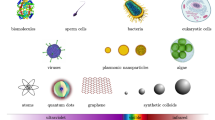Abstract
Mechanical and geometrical properties of the upper and central airways between the mouth and the carina can be inferred noninvasively in individual subjects from high frequency acoustic reflection data measured at the mouth. Idealizations implicit in the theoretical inverse-scattering formalism used to infer this information lead to a variety of limitations in data acquisition, and several forms of errors. In particular, airway wall dynamics, propagation of higher order modes, and limited measurement bandwidth combine to limit spatial resolution.
Similar content being viewed by others
References
Dawson, S.V. and E. Eliot. Wavespeed limitation of expiratory flow—A unifying concept.J. Appl. Physiol.: Respir. Environ. Exercise Physiol. 43:498–515, 1977.
DuBois, A.B., A.W. Brody, D.H. Lewis, B.F. Burgess, Oscillation mechanics of the lungs and chest in man.J. Appl. Physiol. 8:587–594, 1956.
Fredberg, J.J. and J.A. Moore. Distributed response of complex branching duct networks,J. Acoust. Soc. Am. 63(3):954–961, 1978.
Fredberg, J.J., M.E. Wohl, G.M. Glass, and H.L. Dorkin. Airway are by acoustic reflections measured at the mouth.J. Appl. Physiol.: Respir. Environ. Exercise Physiol. 48(5):749–758, 1980.
Hoffstein, V., G.M. Glass, M.E. Wohl, H.L. Dorkin, D. Strieder, and J.J. Fredberg. Tracheal geometry and compliance during breathing.Physiologist (Abstract) 23(4):165, 1980.
Hyatt, R.E., T.A. Wilson, E. Bar-Yishay. Prediction of maximal expiratory flow in excised human lungs.J. Appl. Physiol.: Respir. Environ. Exercise Physiol. 48(6):991–998, 1980.
Jackson, A.C., J.P. Butler, F.J. Millet, F.G. Hoppin, S.V. Dawson. Airway geometry by analysis of acoustic pulse response measurements.J. Appl. Physiol.: Respir. Environ. Exercise Physiol. 43:523–536, 1977.
Laennec, R.T.H.De L'Auscultation Mediate, 1st Paris Edition. Brosson and Chaude, 1819.
Mazzei, W., R. Castile, J.J. Fredberg, M.E. Wohl, G.M. Glass, and L. Brooks. Correlation of maximal expiratory flow and airway area.Physiologist (Abstract). 24:83, 1981.
Sidell, R.S. and J.J. Fredberg. Non-invasive inference of airway network geometry from broadband lung reflected data.J. Biomech. Eng. 100:131–138, 1978.
van den Berg, J.W. An electrical analogue of the trachea, lungs, and tissues.Acta Physiol. Pharmacol. Neerl. 9:361–385, 1960.
Ware, J.A. and K. Aki. Continuous and discrete inverse scattering problems in a stratified elastic medium. I. Plane waves at normal incidence.J. Acoust. Soc. Am. 54:911–921, 1969.
Author information
Authors and Affiliations
Additional information
This research was supported by NHLBI grant HL-26800.
Rights and permissions
About this article
Cite this article
Fredberg, J.J. Acoustic determinants of respiratory system properties. Ann Biomed Eng 9, 463–473 (1981). https://doi.org/10.1007/BF02364764
Issue Date:
DOI: https://doi.org/10.1007/BF02364764




